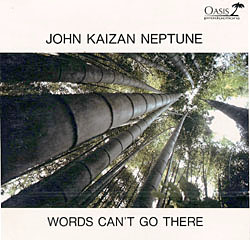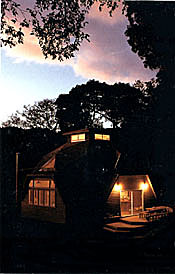| John Kaizan Neptune Recordings Words Can't Go There |
 |
| John Kaizan Neptune Recordings Words Can't Go There |
 |
For this recording I chose a variety of solo pieces using a variety of different lengths of shakuhachi. There are "Kinko" style and other honkyoku from the Edo period (1603-1868): Tsuru no Sugomor, Shika no tone, Honshirabe, and Sagariha; "Tozan" style honkyoku from the turn of this century: Asa Kaze and Kogarashi; one folk tune, Mogamigawa Funa Uta, and three "contemporary" compositions of my own: Past and Present, Colorings, and Words Can't Go There.
Six different lengths of shakuhachi are used; in Japanese feet or "shaku" they are: 1.6, 1.8, 2.0, 2.1, 2.4, and 3.0 (from 49cm to 91cm.). All of these flutes have the same basic arrangement of five holes, but of course the pitch and tone color for each one is unique.
Although there are different styles of music and different lengths of shakuhachi, I feel there is a certain continuity to this recording. I hope that the listener can feel some of the joy and sadness, the high and low, the active and silent... the intense power of "quiet space" that is the essence of shakuhachi. It is a quality difficult to describe and something I don't do very well. I guess for me, words can't go there.
 |
CompositionsTsuru no sugomori (Nesting Life of
the Cranes) |
Go To |
|||